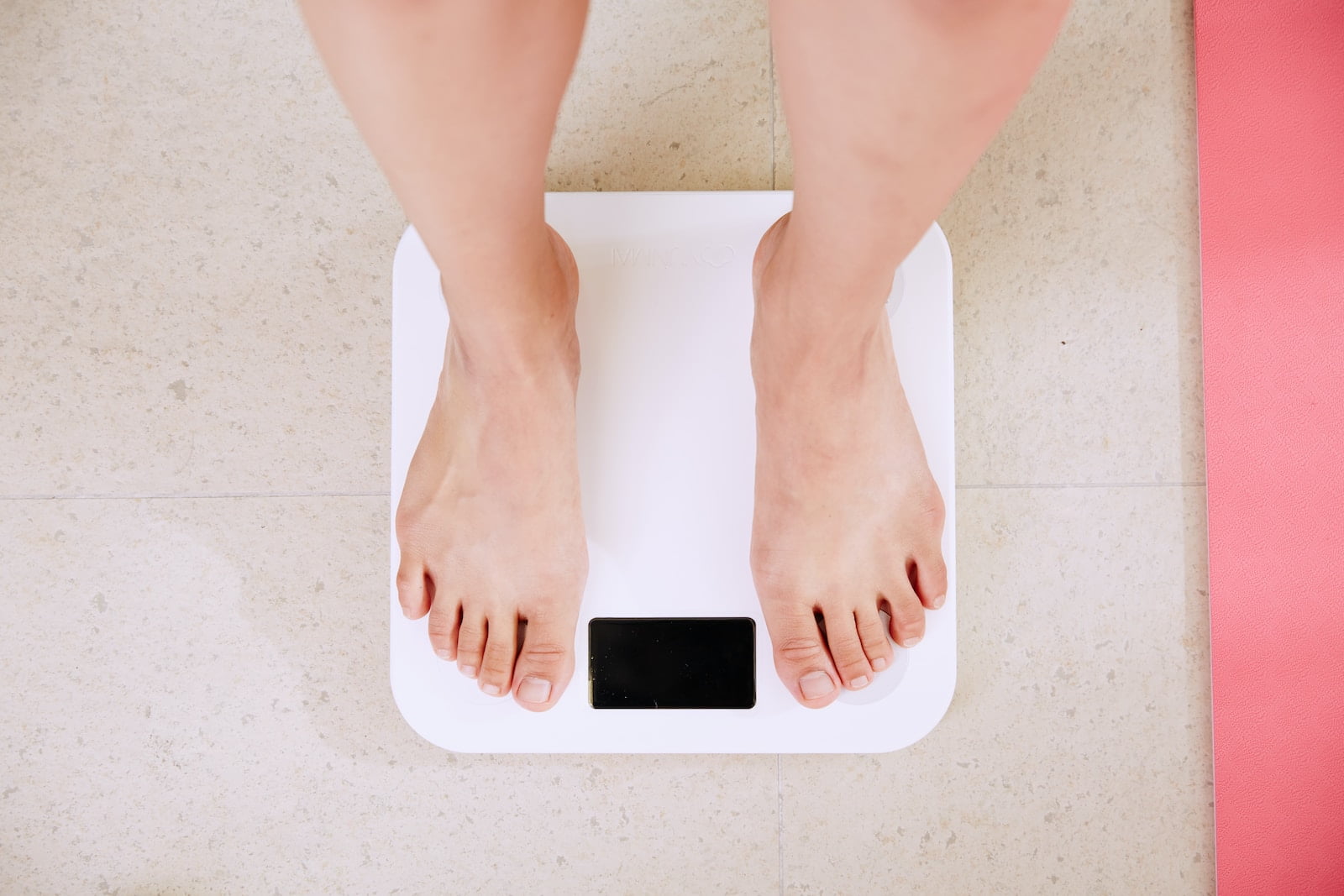Introduction to Weight Lose
 In today’s world, weight loss has become a significant concern for many individuals. The desire to achieve a healthier lifestyle and improve overall well-being has led people to embark on weight loss journeys. However, before diving into the strategies and techniques for weight loss, it’s crucial to understand what weight loss truly entails and why it holds such importance.
In today’s world, weight loss has become a significant concern for many individuals. The desire to achieve a healthier lifestyle and improve overall well-being has led people to embark on weight loss journeys. However, before diving into the strategies and techniques for weight loss, it’s crucial to understand what weight loss truly entails and why it holds such importance.
Understanding Weight Lose
Weight loss refers to the process of reducing body weight, usually by decreasing body fat. It involves a combination of various factors, including diet, exercise, and lifestyle changes. The goal of weight loss is not just about achieving a certain number on the scale but also enhancing overall health and preventing potential health risks associated with excess weight.
Why Weight Lose is Important
Weight loss carries numerous benefits beyond just physical appearance. Shedding those extra pounds can significantly improve one’s quality of life and overall well-being.
Benefits of Weight Lose
- Improved Health: Excess weight is often linked to various health conditions such as heart disease, diabetes, high blood pressure, and joint problems. By losing weight, individuals can reduce the risk of developing these conditions and improve their overall health.
- Increased Energy Levels: Carrying excess weight can lead to feelings of fatigue and low energy levels. Weight loss can boost energy levels and enhance overall vitality.
- Enhanced Mobility: Losing weight can alleviate strain on joints and muscles, making movement and physical activities more comfortable and enjoyable.
- Boosted Self-Confidence: Achieving weight loss goals can boost self-esteem and confidence, leading to a more positive self-image and improved mental well-being.
- Better Sleep: Weight loss can improve sleep quality and reduce sleep disorders such as sleep apnea, leading to better overall rest and rejuvenation.
Getting Started with Weight Lose
Embarking on a weight loss journey can be both exciting and challenging. To set yourself up for success, it’s important to establish clear goals, create a well-structured weight loss plan, and track your progress along the way.
Setting Goals for Weight Lose
When setting weight loss goals, it’s essential to make them specific, measurable, attainable, relevant, and time-bound (SMART). This approach allows for clear direction and helps stay motivated throughout the journey.
Creating a Weight Lose Plan
A well-designed weight loss plan encompasses both dietary changes and physical activity. It should include a balanced and nutritious diet, a tailored exercise routine, and strategies for managing lifestyle factors that may affect weight loss.
Tracking Progress and Monitoring Results
 Tracking progress is crucial for staying motivated and making necessary adjustments to your weight loss plan. Regularly monitoring weight, body measurements, and keeping a food and exercise journal can provide valuable insights into your progress and help identify areas of improvement.
Tracking progress is crucial for staying motivated and making necessary adjustments to your weight loss plan. Regularly monitoring weight, body measurements, and keeping a food and exercise journal can provide valuable insights into your progress and help identify areas of improvement.
Nutrition for Weight Lose
A healthy and balanced diet plays a significant role in achieving weight loss goals. Understanding the concept of calorie balance, adopting healthy eating habits, and incorporating superfoods can support effective and sustainable weight loss.
Understanding Calorie Balance for Weight Lose
Calorie balance refers to the relationship between the calories consumed through food and beverages and the calories burned through physical activity. To lose weight, it’s important to create a calorie deficit by consuming fewer calories than you expend.
Healthy Eating Habits for Weight Lose
Adopting healthy eating habits is key to successful weight loss. Focus on incorporating nutrient-dense foods, controlling portion sizes, and reducing the intake of processed and sugary foods. Some essential healthy eating tips include:
- Fill your plate with a variety of fruits and vegetables.
- Choose whole grains over refined grains.
- Opt for lean proteins such as poultry, fish, beans, and tofu.
- Include healthy fats from sources like nuts, seeds, and avocados.
- Stay hydrated by drinking plenty of water.
Incorporating Superfoods for Weight Lose
Superfoods are nutrient-packed foods that provide numerous health benefits and support weight loss efforts. These foods are rich in vitamins, minerals, antioxidants, and fiber. Some examples of superfoods include:
- Berries: Blueberries, strawberries, and raspberries are low in calories and high in antioxidants and fiber.
- Leafy Greens: Spinach, kale, and Swiss chard are packed with vitamins and minerals while being low in calories.
- Lean Protein: Salmon, chicken breast, and Greek yogurt are excellent sources of protein that can aid in weight loss.
- Whole Grains: Quinoa, brown rice, and oats are fiber-rich grains that help promote satiety and regulate blood sugar levels.
Exercise for Weight Lose
Regular physical activity is a vital component of any weight loss journey. Engaging in different types of exercises and creating a well-rounded exercise routine can help burn calories, build muscle, and boost metabolism.
Importance of Physical Activity for Weight Lose
 Physical activity not only helps burn calories but also improves cardiovascular health, strengthens muscles, and enhances overall fitness. Regular exercise contributes to weight loss by increasing calorie expenditure and improving body composition.
Physical activity not only helps burn calories but also improves cardiovascular health, strengthens muscles, and enhances overall fitness. Regular exercise contributes to weight loss by increasing calorie expenditure and improving body composition.
Types of Exercises for Weight Lose
There are various types of exercises that can aid in weight loss. It’s essential to incorporate both cardiovascular exercises and strength training exercises into your routine for optimal results.
Cardiovascular Exercises for Weight Lose
Cardiovascular exercises, also known as aerobic exercises, increase heart rate and promote calorie burn. Some popular cardio exercises include:
Click Here To Buy Our Healthy Cookbook For Only $27 Today!- Brisk walking or jogging
- Cycling
- Swimming
- Dancing
- Jumping rope
Strength Training Exercises for Weight Lose
Strength training exercises help build lean muscle mass, which can increase metabolism and contribute to weight loss. Incorporate exercises such as:
- Weightlifting
- Bodyweight exercises (push-ups, squats, lunges)
- Resistance band workouts
- Pilates or yoga
Creating an Exercise Routine for Weight Lose
 When creating an exercise routine for weight loss, aim for a combination of cardiovascular exercises and strength training exercises. Consider the following factors:
When creating an exercise routine for weight loss, aim for a combination of cardiovascular exercises and strength training exercises. Consider the following factors:
- Frequency: Aim for at least 150 minutes of moderate-intensity aerobic activity or 75 minutes of vigorous-intensity aerobic activity per week, along with strength training exercises two or more days a week.
- Variety: Include a mix of different exercises to target various muscle groups and prevent boredom.
- Progression: Gradually increase the intensity, duration, or difficulty of your workouts as your fitness level improves.
- Rest and Recovery: Allow time for rest and recovery between workouts to prevent overtraining and reduce the risk of injury.
Lifestyle Changes for Weight Lose
In addition to nutrition and exercise, certain lifestyle changes can significantly support weight loss efforts. Managing stress, getting quality sleep, and breaking bad habits while forming good ones can contribute to long-term success.
Managing Stress for Weight Lose
Stress can impact weight gain and hinder weight loss progress. Implement stress management techniques such as:
- Engaging in relaxation exercises like deep breathing or meditation
- Practicing mindfulness and being present in the moment
- Seeking social support and engaging in activities that bring joy
- Prioritizing self-care and taking breaks when needed
Getting Quality Sleep for Weight Lose
Adequate sleep is crucial for weight loss and overall well-being. Lack of sleep can disrupt hormones that regulate appetite and hunger, leading to increased cravings and weight gain. To improve sleep quality:
- Stick to a consistent sleep schedule, going to bed and waking up at the same time each day.
- Create a relaxing bedtime routine to signal your body that it’s time to sleep.
–Create a sleep-friendly environment by keeping the bedroom dark, cool, and quiet.
- Limit exposure to electronic devices before bed, as the blue light can interfere with sleep.
Breaking Bad Habits and Forming Good Ones for Weight Lose
 Identifying and breaking bad habits that contribute to weight gain is essential for successful weight loss. Replace unhealthy habits with positive ones, such as:
Identifying and breaking bad habits that contribute to weight gain is essential for successful weight loss. Replace unhealthy habits with positive ones, such as:
- Limiting sugary beverages and opting for water or unsweetened alternatives.
- Avoiding emotional eating by finding alternative coping mechanisms.
- Planning and preparing meals in advance to avoid unhealthy food choices.
- Incorporating physical activity into daily routines, such as taking the stairs instead of the elevator.
Weight Lose Supplements and Products
Weight loss supplements and products are widely marketed, promising quick and effortless weight loss. However, it’s essential to approach them with caution and understand their effectiveness and potential risks.
Understanding Weight Lose Supplements
Weight loss supplements are products that claim to aid in weight loss by suppressing appetite, increasing metabolism, or reducing fat absorption. It’s important to note that these supplements are not a magic solution and should not replace a healthy diet and regular exercise.
Evaluating the Effectiveness of Weight Lose Products
When considering weight loss products, it’s crucial to research and evaluate their effectiveness. Look for evidence-based studies, customer reviews, and consult with healthcare professionals to make informed decisions.
Consulting a Healthcare Professional for Weight Lose
Before starting any weight loss supplements or products, it’s recommended to consult with a healthcare professional. They can provide personalized advice, evaluate potential risks, and help determine if certain supplements or products are suitable for your individual needs.
Weight Lose Plateaus and Challenges
During a weight loss journey, individuals may encounter plateaus or face challenges that hinder progress. Understanding how to overcome these obstacles is crucial for long-term success.
Dealing with Weight Lose Plateaus
Weight loss plateaus occur when the body adapts to changes and weight loss slows down or stalls. To break through plateaus:
- Review your diet and exercise routine to identify areas for improvement.
- Increase the intensity or duration of your workouts to challenge your body.
- Try incorporating new exercises or activities to keep your body guessing.
- Monitor portion sizes and ensure you’re in a calorie deficit.
Overcoming Weight Lose Challenges
Weight loss journeys can present various challenges. It’s essential to stay motivated and overcome obstacles by:
- Seeking support from friends, family, or online communities.
- Celebrating non-scale victories like increased energy or improved fitness.
- Focusing on the positive changes in overall health and well-being.
- Reminding yourself of your goals and why you started the journey.
Staying Motivated throughout the Weight Lose Journey
Maintaining motivation is key for long-term success. Stay motivated by:
- Setting small, achievable goals to celebrate milestones along the way.
- Tracking progress and recognizing the positive changes you’ve made.
- Finding enjoyable activities and exercises that you look forward to.
- Surrounding yourself with a supportive network of friends and family.
Maintaining Weight Lose
Transitioning from weight loss to weight maintenance is a crucial phase. Adopting healthy lifestyle habits and strategies can help sustain your weight loss success in the long run.
Transitioning from Weight Lose to Weight Maintenance
Transitioning from weight loss to weight maintenance involves finding a balance that allows you to sustain your achieved weight. Some tips for transitioning include:
- Adjusting your calorie intake to match your new weight and activity level.
- Continuing to engage in regular exercise to support weight maintenance.
- Monitoring your weight and making adjustments as needed.
- Focusing on healthy habits rather than short-term restrictive diets.
Adopting Healthy Lifestyle Habits for Long-Term Weight Lose Success
To maintain weight loss, it’s crucial to adopt healthy lifestyle habits that become a sustainable part of your daily routine. Some key habits include:
- Eating a balanced and nutritious diet with a focus on whole foods.
- Engaging in regular physical activity and incorporating exercise into daily life.
- Prioritizing self-care and stress management techniques.
- Practicing mindful eating and listening to your body’s hunger and fullness cues.
Conclusion
Weight loss is a journey that requires dedication, perseverance, and a holistic approach. By understanding the principles of weight loss, incorporating healthy eating habits, engaging in regular exercise, and making sustainable lifestyle changes, individuals can achieve their weight loss goals and improve their overall well-being. Remember, weight loss is not just about the number on the scale but about embracing a healthier and happier lifestyle.
World Trade Center Footage | Webex Costs | Virtual Data Rooms | Structures Annuity Settlement | Sell Annuity Payment | Neuson | Online Classes | Nunavut Culture | Online College Course | Motor Replacements | Motor Insurance Quotes | Mortgage Adviser | Met Auto | Tax credit | Help desk software | Home refinancing | Urgent care | Marketing integration | Debt relief | Bitcoin | Fitness center software | Insurance | Gas | Electricity | Weight loss | Sell house for cash | Automotive repair | Loans | Internet marketing | Mortgage | Attorney | SEO specialist | Lawyer | Donate | Conference Call | Treatment | Degree | Software | Credit | Classes | Investing | Recovery | Trading | Rehab | Hosting | Cord Blood | Claim | Automotive warranty | Paintless dent repair | Mesothelioma Law Firm | Massage School Dallas Texas | Low Credit Line Credit Cards | Life Insurance Co Lincoln | Insurance Companies | Injury Lawyers | How to Donate A Car in California | Home Phone Internet Bundle | Holland Michigan College | Royalty-Free Images Stock | Register Free Domains | Psychic for Free | Ph.D. in Counseling Education | Personal Injury Lawyers | Personal Injury Law Firm | PaperPort Promotional Code | Online Stock Trading | Online Motor Insurance Quotes | Donate your Car for Money | Online Colleges | Health Records, Personal Health Record | Hard drive Data Recovery Services | Donate Old Cars to Charity | Forex Trading Platform | Forensics Online Course | Donate Car to Charity California | Donate Car for Tax Credit | Car Insurance Quotes PA | Email Bulk Service | Donating Used Cars to Charity | Donating a Car in Maryland | Donate Your Car Sacramento | Online Criminal Justice Degree | Donate Your Car for Kids | Futuristic Architecture | Donate Cars in MA | Data Recovery Raid | Mesothelioma | A car accident lawyer | Personal injury lawyer | AC repair | Lawsuit settlements | Car insurance | Flood recovery | Water damage restoration | Rehab doctors | Online degree | Online master’s degree | Doctoral programs | Hail car insurance
